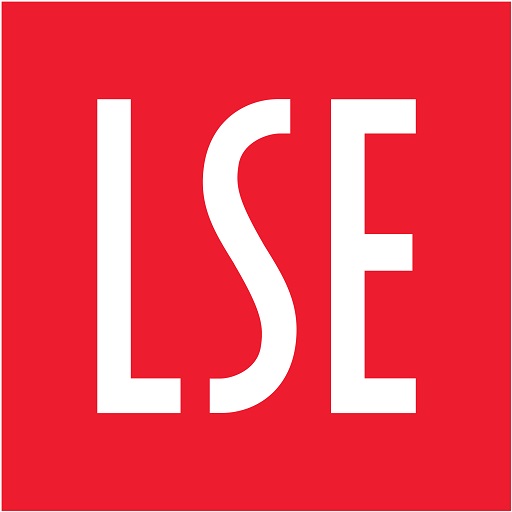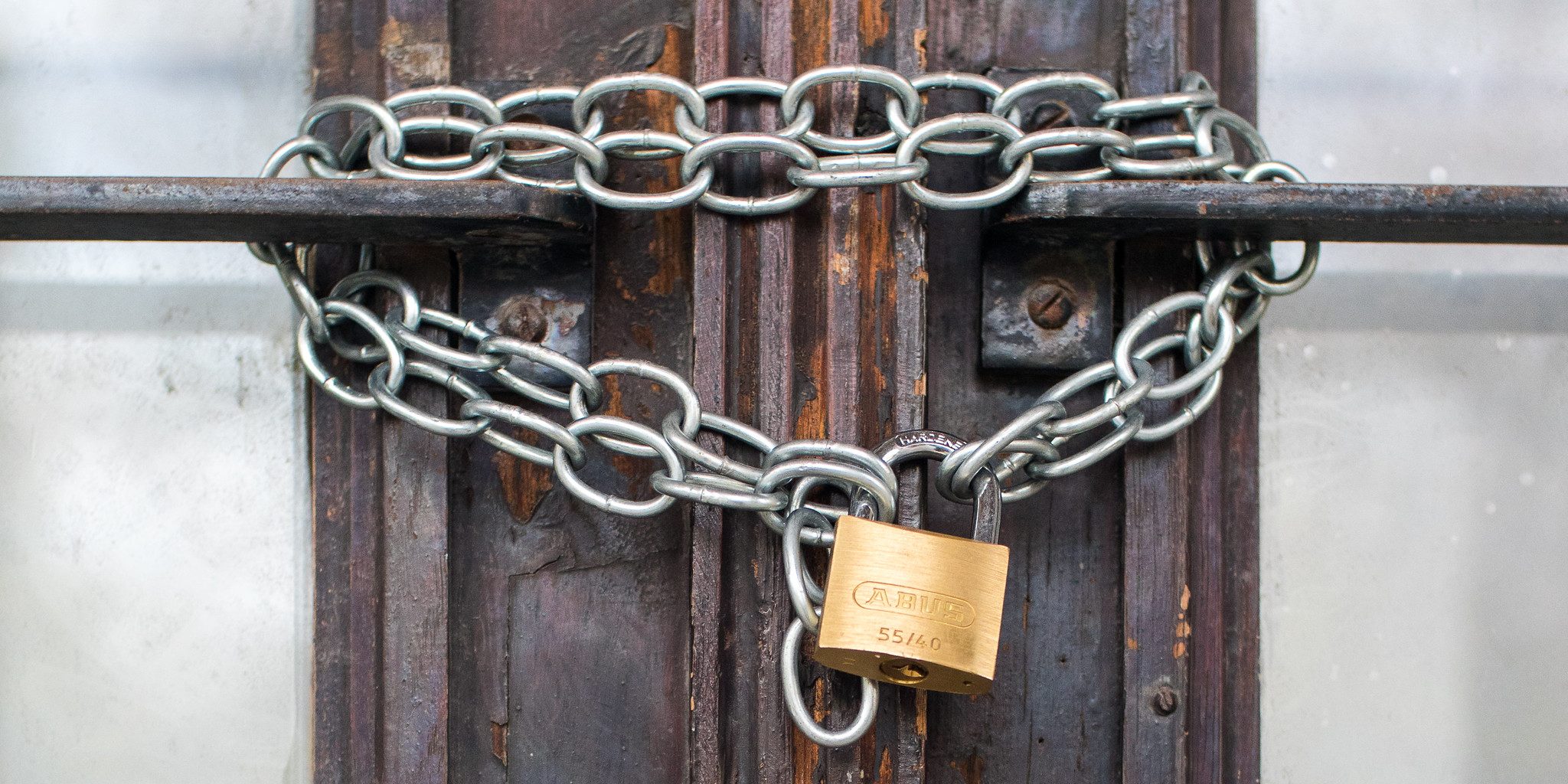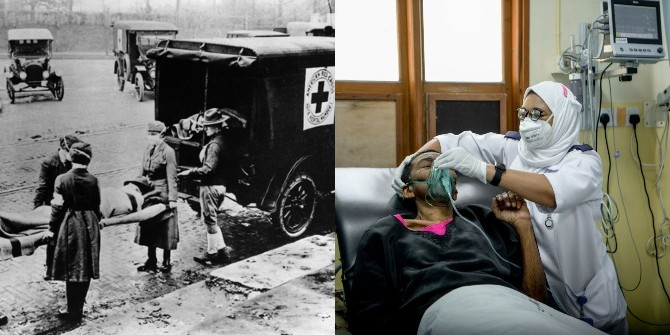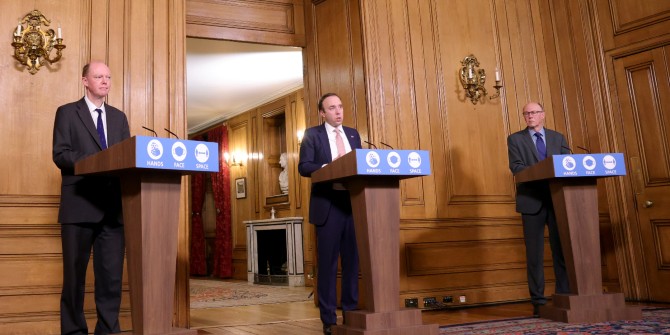While vaccination programmes are well underway in some richer nations, many poorer countries have yet to secure their supply, let alone begin administering jabs. Governments risk failing to contain the pandemic in the coming years unless they guarantee timely global access to COVID-19 vaccines. Olivier Wouters (LSE) looks at the growing global inequalities and how they could be addressed.
Several firms have successfully developed new COVID-19 vaccines in under 12 months, a remarkable achievement. Yet having new COVID-19 vaccines will mean little if people around the world are unable to get vaccinated in a timely manner.
How can we immunise the whole world against COVID-19? Together with colleagues from the LSE, London School of Hygiene & Tropical Medicine, University of Oxford, and Thai Ministry of Public Health, I tried to answer this question in a recent article in The Lancet.
We identified four key challenges that need to be overcome to ensure global access to COVID-19 vaccines. We took deep dives—informed by current data—into each of these challenges around global vaccination. To guide our review, we developed a dashboard to compare 26 leading vaccines on their potential contributions to achieving global vaccine immunity, using a traffic-light system.
Here are some key takeaways.
Challenge 1: Producing COVID-19 vaccines at scale
Production capacity is arguably the key bottleneck at this time: most firms developing COVID-19 vaccines have said they will be able to produce at most 1 billion doses each in 2021—not enough to vaccinate the world population at once. If we had enough doses to go around, the global health community would be less concerned about where countries are in the queue for vaccines.
The recent row between the European Commission and AstraZeneca over the supply of vaccines to EU countries has highlighted the need to ramp up production as fast as possible, and the importance of functioning supply chains and, in some cases, local or regional production capabilities. To its credit, AstraZeneca, which received large amounts of funding from the UK and US governments, has teamed up with manufacturers in other countries to increase capacity, which no other firm has done to the same extent—though coordination within the AstraZeneca network has proven to be complex.
One way of scaling up production would be for pharmaceutical companies to actively share knowledge, technology, and data with governments and manufacturing partners, something that the World Health Organization and its partners have urged vaccine developers to do.
And governments have leverage to make sure companies do this: governments and non-profit groups have given more than $10 billion dollars in public money to leading vaccine developers, including AstraZeneca, Johnson & Johnson, and Moderna, to speed up the development and production of these vaccines. Yet most governments do not seem to be taking advantage of this leverage.
Table 1: Public and non-profit funding for the research, development, and production of leading vaccine candidates
| Technology | Known public and non-profit funding, US$ | Funders | |
|---|---|---|---|
| Sanofi with GlaxoSmithKline | Protein subunit | $2.1bn | US government |
| Novavax | Protein subunit | $2.1bn | Bill & Melinda Gates Foundation, CEPI, US government |
| AstraZeneca with Oxford University | Non-replicating viral vector | $1·5bn | US government |
| Johnson & Johnson | Non-replicating viral vector | $1.5bn | US government |
| Moderna | mRNA | $957m | CEPI, Dolly Parton COVID-19 Research Fund, US government |
| BioNTech with Pfizer | mRNA | $445m | German government |
| Clover Pharmaceuticals with Dynavax | Protein subunit | $430m | Bill & Melinda Gates Foundation, CEPI |
| CureVac | mRNA | $348m | CEPI, German government |
| Sinopharm with Wuhan Institute | Inactivated virus | $142m | Chinese government |
| Medicago | Virus-like particle | $137m | Canadian government |
| Inovio | DNA | $107m | Bill & Melinda Gates Foundation, CEPI, US government |
| Covaxx with Nebraska government | Protein subunit | $15m | Taiwanese government |
| SK Biosciences | Protein subunit | $14m | Bill & Melinda Gates Foundation, CEPI |
| Biological E | Protein subunit | $9m | Bill & Melinda Gates Foundation, CEPI, Indian government |
| University of Hong Kong | Replicating viral vector | $4m | CEPI, Hong Kong government |
| CAMS with IMB | Inactivated virus | $3m | Chinese government, Jack Ma Foundation |
| AnGes with Osaka University | DNA | Unknown | Japanese government |
| Anhui Zhifei with CAMS | Protein subunit | Unknown | Chinese government |
| Bharat Biotech | Inactivated virus | Unknown | Indian government |
| CanSino | Non-replicating viral vector | Unknown | Unknown |
| Gamaleya | Non-replicating viral vector | Unknown | Russian government |
| RIBSP | Inactivated virus | Unknown | Kazakh government |
| SII with Max Planck Institute | Live attenuated virus | Unknown | Unknown |
| Sinopharm with Beijing Institute | Inactivated virus | Unknown | Chinese government |
| Sinovac | Inactivated virus | Unknown | Unknown |
| Vector Institute | Protein subunit | Unknown | Russian government |
For sources and methodology, refer to The Lancet article.
Challenge 2: Pricing vaccines affordably
Some vaccine developers are charging prices for their COVID-19 vaccines that are among the highest ever for vaccines, with prices ranging from around $5 per course to over $60. By comparison, seasonal flu vaccines costs less than $7 per jab in most rich countries, and less than $4 in most low- and middle-income countries.
Even at low prices per course, COVID-19 vaccines may be unaffordable to many governments aiming to vaccinate nearly their entire adult populations—which might become a recurring expense if annual injections are needed.
Here too, the extensive involvement of public funders in the development and production of COVID-19 vaccines provides them with opportunities to make these vaccines globally affordable.
Challenge 3: Making sure vaccines are available globally
High-income countries, representing 16% of the global population, have reserved most of the vaccine supply available in 2021 for themselves, including at least 70% of doses available in 2021 of the vaccines developed by BioNTech (with Pfizer) and Moderna, based on known deals.
As countries like the US, UK, United Arab Emirates, and Israel forge ahead with their vaccination programmes, it is important to remember that many poorer countries have yet to secure their supply, let alone begun administering jabs.
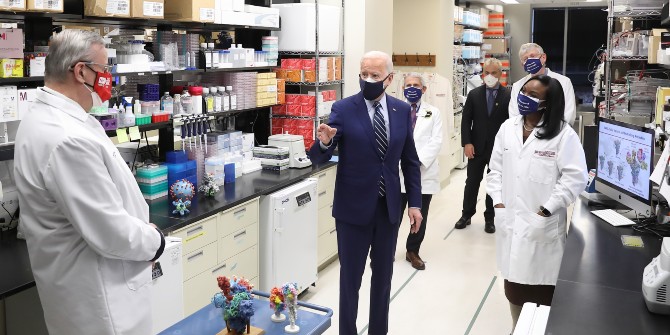
In an effort to avoid a repeat of the mistakes made during the swine flu pandemic in 2009, the World Health Organization, together with Gavi (a major buyer of vaccines for low-income countries) and the Coalition for Epidemic Preparedness Innovations (CEPI), set up the COVAX Facility in the early days of the present pandemic to accelerate global access to COVID-19 vaccines. Despite these efforts, it is looking increasingly likely that many poorer countries will only receive limited supply of vaccines in 2021.
The COVAX Facility arguably remains the best vehicle to achieve global equitable distribution at this stage in the pandemic. More funding and political support the COVAX Facility is urgently needed. Once richer countries have vaccinated their highest risk groups, including front-line health workers and older adults, these governments can share doses with COVAX to promote global access.
Challenge 4: Ensuring smooth deployment of vaccines and tackling vaccine hesitancy
We should take advantage of the many vaccines now available, as not all will be suitable for deployment universally. While many rich countries have robust data systems and delivery infrastructure to recall individuals at the right time for their second dose, this is logistically and organisationally complex in resource-constrained settings. Many low- and middle-income countries lack registries for adult immunisation programmes. Moreover, several of the leading candidates must be kept deep-frozen, which even in high-income countries is very difficult, let alone in resource-poor ones. One-dose vaccines which can be kept refrigerated, some of which are expected to be authorised soon, may prove to be game changers in the global fight against COVID-19.
We also need to increase public confidence and trust to improve uptake. In the Lancet paper we present original data from a 32-country survey—involving almost 27,000 people—on potential acceptance of COVID-19 vaccines, conducted from October to December 2020.
Vietnam had the highest rates of vaccine acceptance among the countries surveyed, with 98 per cent of people saying they would ‘definitely’ or ‘probably’ get vaccinated. India and China were next, with 91 per cent of people in both countries saying they were likely to get vaccinated, followed by Denmark and South Korea with 87 per cent for both. The United Kingdom came in at 81 per cent.
The country with the lowest percentage of people who would ‘definitely’ or ‘probably’ get vaccinated was Serbia (38 per cent) followed by Croatia (41 per cent), France and Lebanon (both 44 per cent) and Paraguay (51 per cent).
The low level of vaccine acceptance in numerous countries is concerning and calls into question whether there will be high enough uptake in some settings to control the spread of the virus.
Conclusions
Vaccine nationalism is short-sighted. The scramble by wealthy countries to secure vaccines for their populations risks leaving poorer countries unable to secure enough doses of vaccines. As well as being inequitable, the widespread disregard for a global approach to vaccine allocation shown by national governments threatens to prolong the pandemic and increase the risk of new variants of the virus arising—against which existing vaccines may be less effective. This may force countries to close their borders for longer, further damaging their own economies.
The distinct characteristics of leading COVID-19 vaccines across the four dimensions of the global vaccination challenge generate trade-offs. Globally and nationally, the availability of diversified sets of vaccines is likely needed to bring the global pandemic under control.
This post represents the views of the author and not those of the COVID-19 blog, nor LSE. It is based on Olivier Wouter’s contribution to How to Make COVID-19 Vaccination a Success, an event hosted by the LSE in January 2021.
